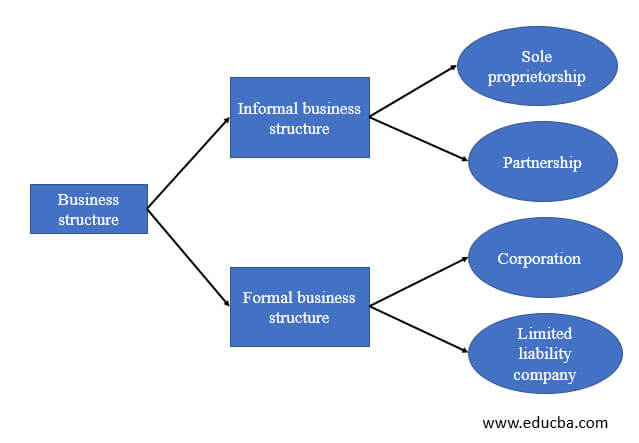What is a Simple Business Structure?
Introduction
When starting a new business, one of the crucial decisions an entrepreneur must make is choosing the right business structure. The business structure determines the legal and financial framework within which the company will operate. While there are various types of business structures, some entrepreneurs prefer a simple business structure due to its ease of setup, reduced administrative burden, and straightforward taxation. In this article, we will explore what a simple business structure entails, its advantages, and the different options available.
Understanding a Simple Business Structure
A simple business structure, as the name suggests, is a type of business organization that is uncomplicated and easy to establish and maintain. This structure is particularly suitable for small businesses and startups with limited resources and a relatively straightforward business model. The primary goal of a simple business structure is to reduce complexity and bureaucracy, allowing the entrepreneur to focus on core business activities.
Characteristics of a Simple Business Structure
Sole Proprietorship: A sole proprietorship is one of the simplest business structures. In this arrangement, the business is owned and operated by a single individual, making them personally liable for all debts and obligations of the business. While it is easy to set up and offers complete control to the owner, it also means that personal assets are at risk in case of business liabilities.
Partnership: A partnership is another uncomplicated business structure where two or more individuals (partners) come together to run a business. Each partner contributes to the business financially and shares profits and losses. This structure requires a partnership agreement that outlines the responsibilities, roles, and decision-making authority of each partner.
Limited Liability Company (LLC): An LLC is a hybrid business structure that combines elements of both a corporation and a partnership. It offers limited liability protection to its owners (known as members) while maintaining the simplicity of a partnership. LLCs can have a single member (owner) or multiple members, and they enjoy more flexibility in terms of taxation and management.
S Corporation: An S Corporation is a tax designation rather than a standalone business structure. It allows the company’s income to pass through to its shareholders, avoiding double taxation. To qualify for S Corporation status, the business must meet specific requirements, including having a limited number of shareholders and operating as a domestic corporation.
Advantages of a Simple Business Structure
Ease of Formation: One of the most significant advantages of a simple business structure is its ease of formation. Compared to more complex business structures like corporations, the paperwork and legal requirements are minimal, reducing the time and cost involved in setting up the business.
Minimal Compliance Requirements: Simple business structures typically have fewer ongoing compliance obligations. This means less time spent on administrative tasks and more time dedicated to running and growing the business.
Pass-Through Taxation: Partnerships, sole proprietorships, and LLCs enjoy pass-through taxation. This means that business profits and losses “pass through” the business and are reported on the owners’ individual tax returns, avoiding the double taxation that corporations may face.

What is a simple business structure?
Flexibility: Simple business structures offer greater flexibility in decision-making and management. There are fewer formalities and corporate governance requirements, allowing owners to adapt quickly to changing market conditions.
Direct Control: Owners of simple business structures have direct control over all aspects of the business. They can make decisions without the need for approval from a board of directors or shareholders, allowing for a more agile decision-making process.
Disadvantages of a Simple Business Structure
Unlimited Liability: One of the primary drawbacks of simple business structures is unlimited liability. In a sole proprietorship or partnership, the owner’s personal assets are at risk if the business incurs debts or legal liabilities. This can be a significant concern for entrepreneurs with substantial personal assets.
Limited Access to Capital: Simple business structures may face challenges in raising capital compared to larger, more established corporations. Investors and lenders may be hesitant to provide funding due to the higher level of risk associated with these structures.
Limited Growth Potential: While simple business structures are ideal for small businesses and startups, they may not be suitable for enterprises with ambitious growth plans. The lack of flexibility in ownership and the absence of a clear path for issuing stocks can hinder expansion efforts.
Taxation Limitations: While pass-through taxation can be advantageous in some scenarios, it may also result in higher overall tax burdens for certain businesses. Additionally, S Corporations have restrictions on the number and type of shareholders, which can limit growth opportunities.
Choosing the Right Simple Business Structure
When selecting a simple business structure, entrepreneurs should consider several factors, including liability protection, taxation, management requirements, growth objectives, and long-term plans. Each structure has its own set of advantages and disadvantages, so it’s essential to weigh the pros and cons before making a decision.
Sole Proprietorship: A sole proprietorship is suitable for solo entrepreneurs who want complete control over their business and are comfortable with unlimited liability. It is the simplest and least expensive option to set up.
Partnership: Partnerships are ideal for businesses owned by two or more individuals who wish to pool their resources and expertise. It is important to draft a clear partnership agreement to address key aspects such as profit-sharing, decision-making, and dispute resolution.
Limited Liability Company (LLC): An LLC is a popular choice for small businesses that seek limited liability protection without the formalities of a corporation. It provides a degree of flexibility in management and taxation.
S Corporation: S Corporations are appropriate for businesses that meet specific IRS requirements and aim to minimize double taxation while still maintaining the simplicity of a partnership-like structure. https://cbdtax.com.au/company-business-restructuring/

Conclusion
In conclusion, a simple business structure is a practical and straightforward option for entrepreneurs starting a new business. Whether it’s a sole proprietorship, partnership, LLC, or S Corporation, each structure offers unique advantages and disadvantages. The choice of business structure should align with the entrepreneur’s goals, risk tolerance, and long-term plans for the company. While simple business structures are suitable for many small businesses and startups, it’s essential to consult with legal and financial experts to make an informed decision that sets the business on a path to success.

